Ryan Hall's Blog, page 309
December 17, 2015
Out There: Making Merry on the Run
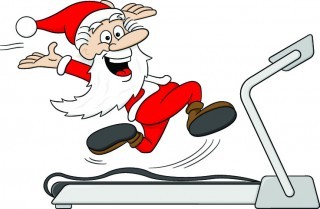
Photo: Shutterstock.com
Columnist Susan Lacke finds her Christmas sprit on a run.
“Jeez, you’re in a bad mood today.” My husband wrinkled his nose as I batted his hand away from the cookie dough. “What made you such a Grinch?”
I turned off the mixer, brushed the flour from my cheeks, and glared at Neil. It wasn’t that I was trying to be grumpy – I just was. Despite my best efforts to deck the halls and find Christmas spirit in a batch (or three) of sugar cookies, I haven’t been feeling very merry. If anything, this year I’ve been one big ol’ ball of “Bah, humbug.”
“Why don’t you go for a run?” Neil suggested gently. “That always cheers you up.”
“In this weather?” I opened the window. Snow was starting to fall – we were expected to get up to a foot of the white stuff that night.
“The sidewalks downtown should be pretty clear.”
“Ugh,” I groaned. “Downtown is full of tourists, homeless people, and assholes.”
“I’m going to give you a moment to think about what you just said.”
Oh, man. I really was in a foul mood. “Okay, fine. I’ll go for a run.”
“Attagirl.” Neil smiled as he disappeared into our basement with the bowl of cookie dough.
I laced up my shoes, clicked on a hydration belt, and disappeared down the street. Instantly, the run was off to a bad start—my neighbors hadn’t yet shoveled their sidewalks from the previous snowstorm, and the ice underfoot sent me sliding onto my butt. Once downtown, I found sidewalks free of snow—but they were also very, very full of people. Holiday light-peepers were out in full force, stopping short every five feet to take yet another selfie (seriously, what is it with these assholes and selfies?). While waiting at a crosswalk, a passing bus sprayed cold, dirty slush onto my tights.
This was supposed to make me feel better? I only felt more Grinchy than before. Not even 15 minutes into my run, I decided to give up and head home to drown my sorrows in eggnog and bah-humbugs.
On my way back, a homeless young mom and her daughter were holding a sign in front of the library:
“ANYTHING HELPS.”
I didn’t have any cash on me, but I did have a Picky Bar in my hydration belt. I fished it out and gave it to the girl, whose eyes widened immediately. She flashed a bright smile with a missing front tooth:
“Is this a candy bar?”
I chuckled. “Kind of. It’s got chocolate chips in it.”
“Mom! Mom!” she waved her treat in the air with glee. “I got candy!”
I swear, I felt my Grinchy heart grow just a little bit. In that moment, I knew exactly what I needed to do.
I stopped at home to grab a few supplies, kissed my very bewildered husband on the cheek, and ran out into the snowy night once more. I didn’t have much with me, but what I did have, I gave—the homeless in the park got socks, hand warmers, and the rest of my Picky Bar stash. When I ran past a Salvation Army bell ringer with chattering teeth, I asked if he preferred coffee or cocoa, then ran to Starbucks to fill and deliver his order. At a light display, I ran past an older couple awkwardly fumbling with a phone to take a selfie—then stopped and offered to take a few shots for them.
And when I finally made it back home, I opened my garage door, paused for a moment, and headed back into the street—this time, to shovel and salt my neighbors’ sidewalks.
Neil was right—that run did cheer me up. Not because of the act of running itself, but because somewhere on the streets of downtown (amongst the tourists, homeless people, and assholes), I found my Christmas spirit again.
***
About The Author:
Susan Lacke does 5Ks, Ironman Triathlons and everything in between to justify her love for cupcakes (yes, she eats that many). Susan lives and trains in Salt Lake City, Utah with three animals: A labrador, a cattle dog, and a freakishly tall triathlete husband. She claims to be of sound mind, though this has yet to be substantiated by a medical expert. Follow her on Twitter: @SusanLacke.
The post Out There: Making Merry on the Run appeared first on Competitor.com.
Adidas Unveils 2016 Boston Marathon Jacket
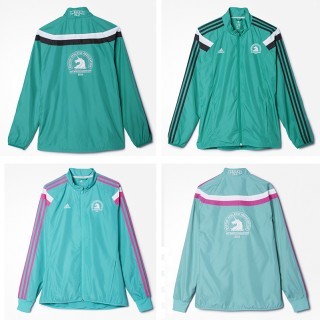
The 2016 Boston Marathon will mark the 25th anniversary of the official Anthem Jacket. Photo: Courtesy of adidas
Adidas has unveiled the look of the official Boston Marathon Anthem Jacket that will commemorate the 120th running of the historic race from Hopkinton, Mass., to Boston on April 18, 2016.
The 2016 jacket features the brand’s Equipment Green color palette—which it says pays homage to the first Anthem Jacket that adidas released in 1991—as well as the Boston Marathon graphics embroidered on the left chest and back, along with “B.A.A.” on the back of the neck. Adidas says “the Equipment Green colorway celebrates the tradition of sport in partnership with this historic race and every participant of the Boston Marathon.”
The jacket will be available at adidas.com beginning on Dec. 20. for $110. A special launch party is planned for 6 p.m. on Dec. 22 at the Boston Marathon adidas Runbase facility on Boylston Street in Boston. Adidas has been the official apparel and footwear sponsor for the Boston Marathon for the past 28 years.
The post Adidas Unveils 2016 Boston Marathon Jacket appeared first on Competitor.com.
December 16, 2015
7 Plant-Based Foods That Help Your Immune System
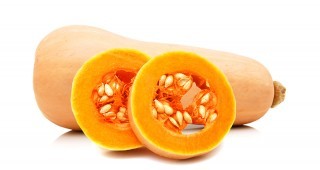
Photo: Shutterstock.com
This article first appeared on Women’s Running.
’Tis the season for a bounty of fall harvest and winter greens. Yet, with temperatures dropping and increased dampness in the air, coupled with packed schedules and limited time for rest, sickness susceptibility tends to run high this time of year.
Regardless of how hard you’re training through the fall and winter months, staying on top of your eating game and keeping nourished is a must. Here are seven plant-based foods loaded with vitamins and immune-boosting properties that will help you stay well and train strong this season.
Sweet Spuds
Swap your white potato with a sweet spud. Sweet potatoes make for hearty pre-race fuel or a post-run pick-me-up and can be baked and topped, just like your traditional loaded baked potato. If you’d rather go the creamier route, mash them up! Simply cut, boil and mash, then mix in your favorite herbs (like fresh rosemary) and drizzle with coconut oil. For an even sweeter finish, spring for honey or cinnamon. Regardless of how you choose to cook your spud, be sure to eat the skin to reap the benefit of extra fiber and potassium.
Winter Squash
Winter squash brings an abundance of nutrients to your table. And thanks to multiple varieties of said squash, you can get creative and enjoy it a number of ways. Turn spaghetti squash into spaghetti. Slice, bake, and stuff acorn squash with creamy hummus or your favorite veggies. Or whip up a warm soup. Don’t forget pumpkin is a squash too. Blend pumpkin puree in your morning smoothie for an extra burst of antioxidants.
Quinoa
This complete plant-based protein will keep you running strong without spiking your blood sugar. Quinoa’s pleasingly neutral taste and texture make it able to be readily enjoyed in any dish that you’d normally cook with rice or pasta—from classic spaghetti to pad thai. Still, the best part about this naturally gluten-free, grain-like seed is that it fills you up without weighing you down or leaving you feeling sleepy.
Lentils
Rich in protein, fiber and iron, while virtually calorie-free, lentils make for an inexpensive, warm, hearty meal in a bowl. Use a slow cooker or crock pot to allow your lentils to sit and simmer with tomatoes, onion, carrots, or other choice veggies, and this soothing stew will be waiting for you after your long run or workday.
Beets
Look to beets to get your blood pumping, while lowering your blood pressure. Both the roots and the greens come packed with health-boosting nutrients. For a simple and easy beet salad, wash, peel and chop your raw beets. Then combine with greens, onions, nuts, seeds and your favorite dressing.
Greens
Summer isn’t the only time of year for bright green salad. In fact, it’s during the winter months certain greens are at their finest. It’s time to invite winter greens like chard, collards, or kale to your kitchen. These greens are packed with essentials like magnesium and vitamin K, not to mention antioxidants. Simply rinse, chop and toss with fruit and veggies for a rich fiber-licious salad.
Citrus
Amp up your intake of vitamins B and C with the help of citrus! What makes a better addition to your smoothies than sweet citrus like clementines and satsumas? If it’s too cold for a smoothie, these oranges can sweeten up your morning bowl of oats, or your afternoon salad. For a slightly tart citrus pick, kumquats (with edible peels) can be incorporated into already sweet chocolate desserts or cocktails.
Spice Things Up
Before you get cooking, here’s a handful of healthy extras to incorporate even more flavor and nutrients into your daily meals.
Nutritional Yeast: For a nutty finish, sprinkle nutritional yeast over your finished dish for supplemental servings of vitamins and minerals.
Apple Cider Vinegar: Take this healthy elixir as a shot, or use apple cider vinegar as a base for a dressing. A spoonful or sip each day will surely help keep the doctor away.
Turmeric: Use this bright yellow spice near the end of your cooking to infuse your food with anti-inflammatory properties and flavor. Keep in mind, a little goes a long way. And because this is a natural dye, it’s best to play it safe and wear an apron.
Garlic: In everything you make this season, chop up a fresh clove of garlic to sprinkle in. Garlic acts as a detoxifying agent and can help you ward off the common cold or flu.
Coconut Oil: No matter what you’re choosing to cook, soak up the added benefits of this wonder oil. Beyond the kitchen, apply coconut oil generously to your skin during the harsh winter months to stay smooth and hydrated.
—
Sarah Kathleen McCartan is a freelance writer, Oiselle Volée runner, and vegan foodie based in St. Augustine, FL. Sarah holds tightly to the mantra “you are what you eat” and shares her passion for a plant-based diet and dedication to an active lifestyle through Vegan on the Run. Sarah is an advocate for real food, made simple. Connect with Sarah on Twitter or Instagram @sarahkmccartan.
The post 7 Plant-Based Foods That Help Your Immune System appeared first on Competitor.com.
Using Nutrition To Recover Better From Injury

Photo: Shutterstock.com
Injuries can quite literally stop a runner in his or her tracks. Recent research suggests that half of sports injuries lead to an average of three weeks without training or competing. Consequently, for a runner eager to return to the streets and trails, any intervention that can increase healing and decrease down time is important.
Cross-training, physical therapy and biomechanical assessments are well-established aspects of the treatment process, but often overlooked is the role of nutrition in the recovery from injury. Dr. Keith Baar, a researcher at the University of California, Davis, believes that nutritional support is a critical element of recovery.
“A greater understanding of the role of nutrition in healing has evolved in the past three to five years, with much of that coming from studies dealing with the recovery of muscle strength and return to play in elite athletes after ACL surgery,” says Dr. Baar. In one such case study, by following an injury-specific nutritional program, the athlete displayed half of the muscle atrophy in the immobilized leg that was expected. Since a return to running after injury is often dictated by the rate of muscle function, maintaining muscle size and strength may significantly hasten recovery.
RELATED: Recover Better To Run Faster
In fact, a 2015 review article in the journal Sports Medicine concluded, “Nutritional support may be crucial to lessen the length of time and reduce the negative aspects of reduced activity and immobilization, as well as to support the return to activity and training.”
According to Dr. Baar, the recommendations can be divided into the role of nutrition in the recovery of two different structures—collagen-based tissues, and muscle tissue. Collagen—the principal component of tendons, ligaments and cartilage—is characterized by a relatively poor bloodflow, making the delivery of potential nutrients all the more difficult. “When nutrients are designated for tendons or ligaments, the increase in blood flow during exercise is the optimal time for absorption,” says Baar.
Exercise also signals the tendon to briefly increase its absorption of important nutrients. Working backwards, in order for the collagen-building nutrients to be floating in the blood stream ready for absorption, meals need to be consumed approximately one hour before exercise.
Baar names four important amino acids—lysine, hydroxylysine, hydroxyproline, and proline—as those that have shown the greatest promise in building collagen. Lysine, an essential amino acid found in meat, cheese and eggs, may play a particularly important role in the health of bones, connective tissue and skin.
RELATED: Eat and Drink Away Sore Muscles
While both scientific and clinical studies have indicated that these amino acids may actually strengthen ligaments and tendons, no long-term research has been carried out to determine the preventative effects of nutritional interventions.
Facilitated by a better blood flow, nutrition may play an even greater role in the growth and recovery of muscle tissue. Amino acids, the building blocks of muscle protein, are readily delivered to muscles and consequently, an adequate daily protein intake may be essential in maintaining muscle mass during injury. Studies show that in periods of inactivity, healthy muscle tissue atrophies at approximately 0.5 percent per day. For a runner that has had surgery or suffered serious injury, two to three weeks of immobilization can lead to a loss of 10 percent of muscle mass. As muscle strength declines at approximately three times the rate that muscle tissue is lost, it doesn’t take a mathematician to realize that extended periods of inactivity can result in big losses in strength.
Without a focused exercise effort—possibly months of rehabilitation—these losses are frequently never recovered, perhaps forever influencing injury risk and performance.
Baar stresses that these recommendations aren’t just for those that have been injured—they also apply to those recovering from hard exercise sessions, a time when muscle breakdown also occurs. “To repair the muscle damage that occurs after hard exercise, a good, well-timed nutritional support program emphasizing leucine-rich proteins is very important.” Sadly, for those that love a post-workout beer or Chardonnay, excessive alcohol (more than 4 drinks) can impair muscle recovery.
The post Using Nutrition To Recover Better From Injury appeared first on Competitor.com.
Lelisa Desisa, Caroline Rotich Will Defend Titles at 2016 Boston Marathon

Caroline Rotich as she crossed the finish line at the 2015 Boston Marathon. Photo: PhotoRun.net
The 2015 Boston Marathon champions—Lelisa Desisa of Ethiopia and Caroline Rotich of Kenya—will be race the Boston Marathon in 2016 to defend their title, it was announced Wednesday.
Desisa outlasted Yemane Tsegay and Wilson Chebet last year, winning in a time of 2:09:17. He also won the Boston Marathon in 2013.
“I am so happy to return to Boston in 2016 to try to make history as a three-time champion of the world’s most historic race and to do my best to represent Ethiopian running on the global stage,” said Desisa. “Boston has become more than a race to me; the city and its people are special and my wins in Boston are the most important moments in my athletic career. I am dreaming of crossing the finish line first for the third time.”
Rotich, who trains in New Mexico, won last year’s race in 2:24:55.
“Winning the 2015 Boston Marathon was my biggest and most treasured performance,” she said. “For what Boston has given me and what Boston has endured, I would like to give back by defending my title on April 18. I cannot wait to line up with everyone else and give it 100 percent.”
The rest of the elite field will be announced at a later date.
The post Lelisa Desisa, Caroline Rotich Will Defend Titles at 2016 Boston Marathon appeared first on Competitor.com.
Equal Distances For Men and Women at 2016 U.S. Mountain Running Championships
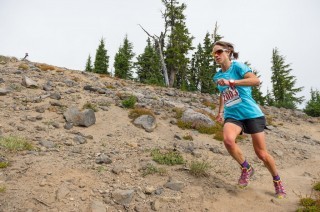
Morgan Arritola won the women's race the 2015 U.S. Mountain Running Championships in Bend, Ore., where women raced 8K while men ran 12K. Photo: Joe Viger
The U.S. Mountain Running Championship will return to Loon Mountain Ski Area in Lincoln, N.H., on July 3, 2016 and will be the sole selection race for next year’s U.S. mountain running team that will compete at the world championships in Bulgaria.
Men and women will both run a 6.6-mile course that climbs 2,950 feet to the summit of the ski area, a departure from a team selection strategy dating back to 2011 when the team staff recommended selection races very closely mirror the World Mountain Running Championship (WMRC) courses for men and women in both distance and profile.
RELATED: Arritola, Smyth Topple Fields at U.S. Mountain Running Championships
When established in 1985, the World Mountain Running Association (WMRA) modeled its championship (then called a “Trophy”) race distances on the precedent set by the IAAF’s World Cross Country Championships where women ran a shorter distance than men. (Note: Beginning in 2017, men and women will run equal distances at the IAAF World Cross Country Championships.) These unequal distances are codified in the WMRA Constitution and U.S. team selection races from 2011 to 2015 used the WMRC courses as a guide, featuring separate course lengths and profiles for men and women.
This decision by U.S. Mountain Running Team staff to equalize race distances was made based on information from a number of sources including feedback an online survey of members from the mountain running community, input from elite mountain runners and the USATF MUT Executive Committee and a review of the effectiveness of the current selection strategy.
PHOTOS: 2015 U.S. Mountain Running Championships
After considering the aforementioned sources and other factors, a 10K course was selected due to a limit of available vertical gain at Loon Mountain, and with a 2,100-foot difference between the top and bottom of Loon Mountain (requiring some downhill running to achieve the current 3000 feet of climbing), this results in a 6 percent average grade compared to 8 percent for the men’s course at next year’s world mountain running championships ( roughly 12K). Adding distance to the men’s course would have resulted in a further reduction in average grade.
Equal distances for men and women at the U.S. Mountain Running Championships may not be an annual thing just yet. In fact, it may change again in 2017 because up/down courses at the world championships for odd numbered years are substantively different from uphill courses due to the multi-lap format (as was the case in 2015).
“This is not to say that the U.S. Mountain Running Team staff does not fully support gender equity,” says team leader Richard Bolt. “We do, and we will continue to advocate for gender equity at the World Mountain Running Championships in race distance and team size. In the meantime, we need to be sure to manage a selection process that is rational and fields the best possible team for the world championships. When the location and course for the 2017 world mountain running championships are determined, the U.S. Mountain Running Team staff and the USA Track & Field Mountain/Ultra/Trail Council will again evaluate options for an appropriate selection race.”
The post Equal Distances For Men and Women at 2016 U.S. Mountain Running Championships appeared first on Competitor.com.
Workout Of The Week: Relaxed 10K Time Trial
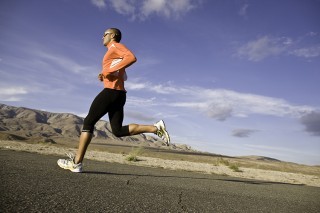
The relaxed 10K time trial should be challenging, but not an all-out effort. Photo: John Segesta
The workout that I call a relaxed 10K time trial is not one that I learned from anyone else. Although I’m sure other runners do it, I came up with it (or reinvented it) on my own. It’s one of my favorite workouts, so I can’t help but try to convert other runners to it, as I’m doing right now!
In format, it couldn’t be simpler. Warm up with some jogging and a few strides (20-second efforts at 90 percent of full speed), and then run a measured 10K at about 95 percent of race effort, on the clock. A post time-trial cooldown is optional. (Contrary to popular belief, cooling down after hard running serves no purpose in terms of attenuating physiological stress or facilitating recovery. It just feels good and adds a little more volume to the workout.)
RELATED: Tempo Trials
Nailing the targeted intensity of this workout is crucial. It should be close enough to a maximal, race-type effort to give you a strong training stimulus and an accurate measurement of your current fitness level, but it should not become a de facto race. You need to hold something back so the workout doesn’t take too much out of you, compromising your training in the next few days.
When I say “95 percent effort” I mean exactly that. So, if you currently have 40-minute 10K fitness, you should run your relaxed 10K time trial about 5 percent slower than that, or in 42 minutes. You might think that the difference between a 95 percent effort and a 100 percent effort is negligible in terms of how stressful a workout is, but it’s not. That last 5 percent makes all the difference in the world. If you are currently a 40-minute 10K racer and you run a 42-minute 10K workout, you will feel significantly more comfortable in that workout than you would in a real race and you will also significantly feel better in the next day’s run.
What’s the purpose of running a relaxed 10K time trial? Again, it gives you a very clear view of your current fitness level. In that regard, it’s the next best thing to an actual race. Once you get the hang of this workout and are able to perform it at the right intensity, you will find it very easy to convert your time to a projected race time. As in, “I think I could have run about two minutes and 15 seconds faster than the time I just ran if I’d had a gun to my head.”
Regardless of the distance of the race you are training for, your 10K performance capacity is a great indicator of your race-specific fitness. In other words, you need to be capable of running a solid 10K whether you’re preparing for a 5K or a marathon. So, I like to run a relaxed 10K time trial every three or four weeks to track my progress toward my race goals, whatever they may be at the time.
In addition to being an excellent fitness indicator, the relaxed 10K time trial is also a tremendous fitness builder. It’s important to do some very hard workouts when you are training toward doing your best in races. Hard workouts are uncomfortable, so it requires a certain amount of motivation to put in the effort required to absorb the suffering you must absorb to get the most out of such a workout. In my experience, performance test workouts are the most motivating kinds of workouts. These are workouts where the object is to put up a good number, just as you do in races, and are workouts that you do the same way every time, allowing you to compete against yourself.
Just be sure you don’t let that competition get out of hand. I keep myself in check by running conservatively in the first relaxed 10K time trial I do within a given cycle. I go hard but keep the edge off my suffering and thus produce a time that will be easy to beat when I repeat the session. Ideally, improved fitness alone will enable you to improve your relaxed 10K time trial time in each new iteration. It’s best to allow a little room to improve it through increased effort if necessary, however, because it’s important that these workouts build confidence–you need to set yourself up for success. My goal is to beat my last relaxed 10K time trial just slightly in each new one. Even if I feel capable of blowing my preceding time away on a given day, I hold myself back to leave plenty of room to post a still better time in a few weeks.
Finally, a note on the training environment. I love running on the track, so I always perform my relaxed 10K time trials there. You will certainly post faster times there than anywhere else, and being able to take splits every 400 meters helps you regulate your effort and pacing. But if you hate running in circles or don’t have ready access to an oval, you can do this workout elsewhere. Just do it in the fastest environment that’s convenient to you and do it in the same place every time, for apples-to-apples comparisons.
The post Workout Of The Week: Relaxed 10K Time Trial appeared first on Competitor.com.
Shoe Of The Week: Brooks Ravenna 7
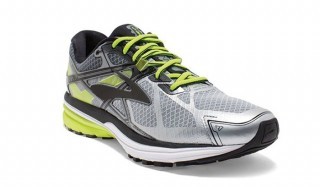
The latest version of the Ravenna features durable protection and long-wearing comfort for half marathon and marathon training.
Since its debut, the Brooks Ravenna has been known as a workhorse of a training shoe for half marathoners and marathoners. It’s always offered a great blend of soft cushioning and subtle (but effective) stability—something most runners need during the second half of a long training run or race. Throughout the years, the Ravenna has been tweaked slightly with new upper treatments and new foam configurations. The latest incarnation follows that trend, with a much better upper (thin TPU bands welded to the mesh have been adjusted slightly and the midfoot saddle strapping is more connected to the rear of the foot) and slight but significant changes to the undercarriage chassis (changes in the foam layering with a less rigid medial post and new outsole rubber configurations). These small changes are a good example of a shoe company trying to improve a shoe based on laboratory and wear-tester feedback without entirely overhauling it. The result is that the Ravenna 7 is a very nice upgrade from the previous version, offering a slightly more energetic ride than its predecessors. It’s roughly the same weight and has the same heel-toe offsets, but runs smoother and more comfortably with a slighter easier flex pattern and slightly more lively forefoot. Ultimately, that could put more of a spring in your step at mile 18 of the 20-miler you’ll be doing en route to your next marathon.
For runners who have been running in the Ravenna, you’ll notice the changes as being all for the better; for runners who are new to the shoe, you’ll find a shoe with a soft, luxurious fit and a stable, cushioned platform for running long training runs and races. This version offers a touch more versatility than its predecessors, with the ability to run some faster workouts (like longer tempo runs or longer progression-style runs). But it’s still definitely not a shoe that inspires all-out speed for track sessions, shorter fartleks or short racing efforts. “It felt surprisingly smooth for a shoe with some stability. I felt like the shoe controlled me just enough without over controlling me,” said Competitor wear-tester Lisa Jhung. “I felt fairly agile in this shoe, like I was equipped with the support I need to charge.”
This is the shoe for you if … You’re looking for a high-mileage marathon training shoe with a good blend of support and soft cushioning.
Price: $120
Weights: 10.7 oz. (men’s size 9.0); 8.8 oz. (women’s size 7.0)
Heel-Toe Offset: 10mm
RELATED: Shoe Of The Week—Nike Air Zoom Odyssey
The post Shoe Of The Week: Brooks Ravenna 7 appeared first on Competitor.com.
What’s the Perfect Slope? Researchers Study Uphill Mountain Running
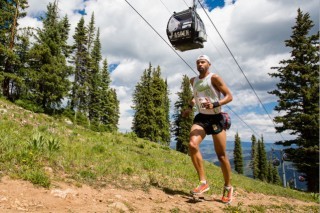
Joe Gray, 31, of Colorado Springs won the Power of Four Vertical K race up Ajax Mountain in Aspen, Colo., on July 18. Gray covered the route, which began at 7,952 feet and gained 3,258 feet over 2.72 miles, in a new course record of 37:30. Photo: Aspen Snowmass
Running uphill on steep inclines is never easy, but researchers at the University of Colorado Boulder have discovered a range of slope angles that would allow an athlete to ascend a mountain most quickly.
“For either running or walking, slopes between 20 and 35 degrees require nearly the same amount of energy to climb the hill at the same vertical velocity,” said Rodger Kram, an associate professor in CU-Boulder’s Department of Integrative Physiology and senior author of the study.
The study, which was recently published in the Journal of Applied Physiology, is believed to be the first to examine the metabolic costs of human running and walking on such steep inclines. Kram said the findings also indicate that you can still get a good aerobic workout simply by walking up very steep trails.
Several competitive mountain runners co-authored the study, including 2013 World Junior Mountain Running Champion Amanda Ortiz, a CU cross country runner and undergraduate student in the Department of Integrative Physiology.
The research focused on the challenges posed by vertical kilometer (VK) races, which have grown in popularity in recent years in mountainous regions of the U.S. and Europe. Athletes run or walk up steep slopes ranging between 10 degrees and 30 degrees in order to ascend 1,000 meters over a distance of less than 5 kilometers, or about 3.1 miles.
PHOTOS: Aspen’s Power of Four VK and 50K Races
The world record for a VK course is 29 minutes, 42 seconds and was set in Fully, Switzerland on a course with an average slope of 31 degrees. By comparison, elite runners can finish a 10K race on flat ground in less than 30 minutes.
The extreme slopes of VK courses inspired Kram and his colleagues to design a specialized treadmill that can reach inclines of up to 45 degrees. Standard gymnasium treadmills only reach a maximum incline of around 9 degrees, he said, while a typical black diamond ski run slopes about 25 degrees.
“We wondered if there was an optimal incline for beating the VK world record,” Kram said. “If you were running up just a one degree incline, you’d have to run over 70 miles per hour to beat that record, which is impossible. And if the slope were 90 degrees, you’d need a rope and rock climbing equipment, which isn’t feasible either. We figured there was a perfect angle somewhere in between.”
Instead, the researchers found that there was actually an optimal range of slope angles, a “Goldilocks plateau” of between 20 and 35 degrees where the degree of incline “doesn’t really matter and the same rate of ascent requires the same rate of energy expenditure,” Kram said.
Kram summarized the findings via an analogy: “Imagine that you are standing in Colorado at a trailhead where the base elevation is 9,000 feet. Your friend challenges you to race to the summit of the mountain, which tops out at 12,280 feet, i.e. 1,000 meters of elevation gain. There are several different trails that go to the summit. They are all pretty steep and some are extremely steep. One trail averages 10 degrees incline and the sign says it is 3.6 miles long. A second trail averages 30 degrees, but is only 1.25 miles long. A third trail averages 40 degrees, but only 1 mile long. To get to the summit the fastest, which trail should you choose and should you walk or run?
“Based on our research, we now know that choosing the second trail (30 degrees) and walking as fast as you can within your aerobic capacity is the fastest way to go,” he said.
PHOTOS: Images From The Mont Blanc Marathon Weekend
The study focused on a vertical rate of ascent of just over 1 foot per second, a pace that the high-level athletes could sustain aerobically during the testing. At that speed, walking used about nine percent less energy than running. So, sub-elite athletes can ascend on very steep uphills faster by walking rather than running.
The study examined 15 competitive mountain runners as they ran and walked on the treadmill at seven different angles ranging from 9 to 39 degrees. The treadmill speed was set so that the vertical rate of ascent was the same. Thus, the treadmill speeds were slower on the steeper angles. The athletes were unable to balance at angles above 40 degrees, suggesting a natural limit on the feasible slope for a VK competition.
“Very few people walk or run up such steep slopes, but by going to extremes, we broaden our horizons and investigate the limits to human performance,” Kram said.
As for amateur runners who aren’t planning to try a VK race anytime soon? These findings indicate that you can still get a good aerobic workout simply by walking up very steep inclines, Kram said.
Competitive mountain runners Nicola Giovanelli, a visiting scholar from the University of Udine, Italy; Keely Henninger, who now works for Nike; and Ortiz co-authored the study. The University of Colorado Boulder Undergraduate Research Science Training (BURST) and Undergraduate Research Opportunity Program (UROP) supported the research.
Boulder/Denver area runners who are interested in being a participant in future uphill running experiments should contact uphillrunstudy@gmail.com
The post What’s the Perfect Slope? Researchers Study Uphill Mountain Running appeared first on Competitor.com.
Rock ‘n’ Roll Marathon Series Releases 2016 Schedule
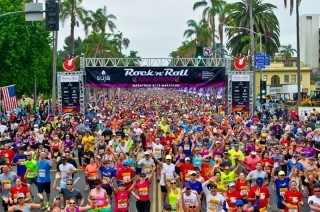
The Rock ‘n’ Roll Marathon series will hit 30 cities around the world in 2016, starting Jan. 16 in Phoenix and wrapping up Dec. 4 in San Antonio, Texas.
The schedule was announced Wednesday, along with a special 24-hour Worldwide Series Sale on Dec. 16 featuring the lowest registration prices of the year.
“We are ready to kick off our 2016 tour with one of our biggest promotions of the year,” said Keith Kendrick, Chief Marketing Officer of the Rock ‘n’ Roll Marathon Series. “Runners can take advantage of big savings all day Wednesday, but select deals are available with limited supply so secure your spot early. We wish all of our participants a happy holiday season and hope to see them at an event in 2016.”
The 2016 schedule will have one inaugural race—the Rock ‘n’ Roll Querétaro Marathon & ½ Marathon on Oct. 2 in Querétaro, Mexico. In all, the series will hit 26 North American cities in 2016 and additional four cities in Europe—Madrid, Liverpool, Dublin and Lisbon.
Here’s the complete schedule:
Jan. 16-17: Rock ‘n’ Roll Arizona Marathon and 1/2
Feb. 28: Humana Rock ‘n’ Roll New Orleans Marathon and 1/2
March 12: Rock ‘n’ Roll DC Marathon and 1/2
March 19-20: Humana Rock ‘n’ Roll Dallas Half Marathon
March 20: Rock ‘n’ Roll Mexico City Half Marathon
April 2-3: Carlsbad 5000
April 3: Transamerica Rock ‘n’ Roll Half Marathon San Francisco
April 9-10: Rock ‘n’ Roll Raleigh Marathon and 1/2
April 24: EDP Rock ‘n’ Roll Madrid Marathon and 1/2
April 30-May 1: St. Jude Rock ‘n’ Roll Nashville Marathon and 1/2
May 28-29: Rock ‘n’ Roll Liverpool Marathon and 1/2
June 4-5: Rock ‘n’ Roll San Diego Marathon and 1/2
June 18: Rock ‘n’ Roll Seattle Marathon and 1/2
July 15-17: Humana Rock ‘n’ Roll Chicago Half Marathon
Aug. 7 : Rock ‘n’ Roll Dublin Half Marathon
Sept. 3-4: Humana Rock ‘n’ Roll Virginia Beach Half Marathon
Sept. 17-18: Rock ‘n’ Roll Philadelphia Half Marathon
Sept. 25: Oasis Rock ‘n’ Roll Montreal Marathon and 1/2
Oct. 1-2: Rock ‘n’ Roll San Jose Half Marathon
Oct. 2: EDP Rock ‘n’ Roll Lisbon Marathon and Vodafone Rock ‘n’ Roll Half Marathon
Oct. 2: Rock ‘n’ Roll Querétaro Marathon and ½
Oct. 8: Rock ‘n’ Roll Brooklyn Half Marathon
Oct. 15-16: Rock ‘n’ Roll St. Louis Half Marathon
Oct. 16: Rock ‘n’ Roll Denver Half Marathon
Oct. 22-23: Oasis Rock ‘n’ Roll Vancouver Half Marathon & Cunningham Seawall 10K
Oct. 30: Banorte Rock ‘n’ Roll Merida Half Marathon
Nov. 5-6: Rock ‘n’ Roll Savannah Marathon and 1/2
Nov. 12-13: Rock ‘n’ Roll Las Vegas Marathon and 1/2
Dec. 3-4: Humana Rock ‘n’ Roll San Antonio Marathon and 1/2
TBD: Rock ‘n’ Roll Los Angeles Half Marathon
The post Rock ‘n’ Roll Marathon Series Releases 2016 Schedule appeared first on Competitor.com.
Ryan Hall's Blog
- Ryan Hall's profile
- 21 followers



